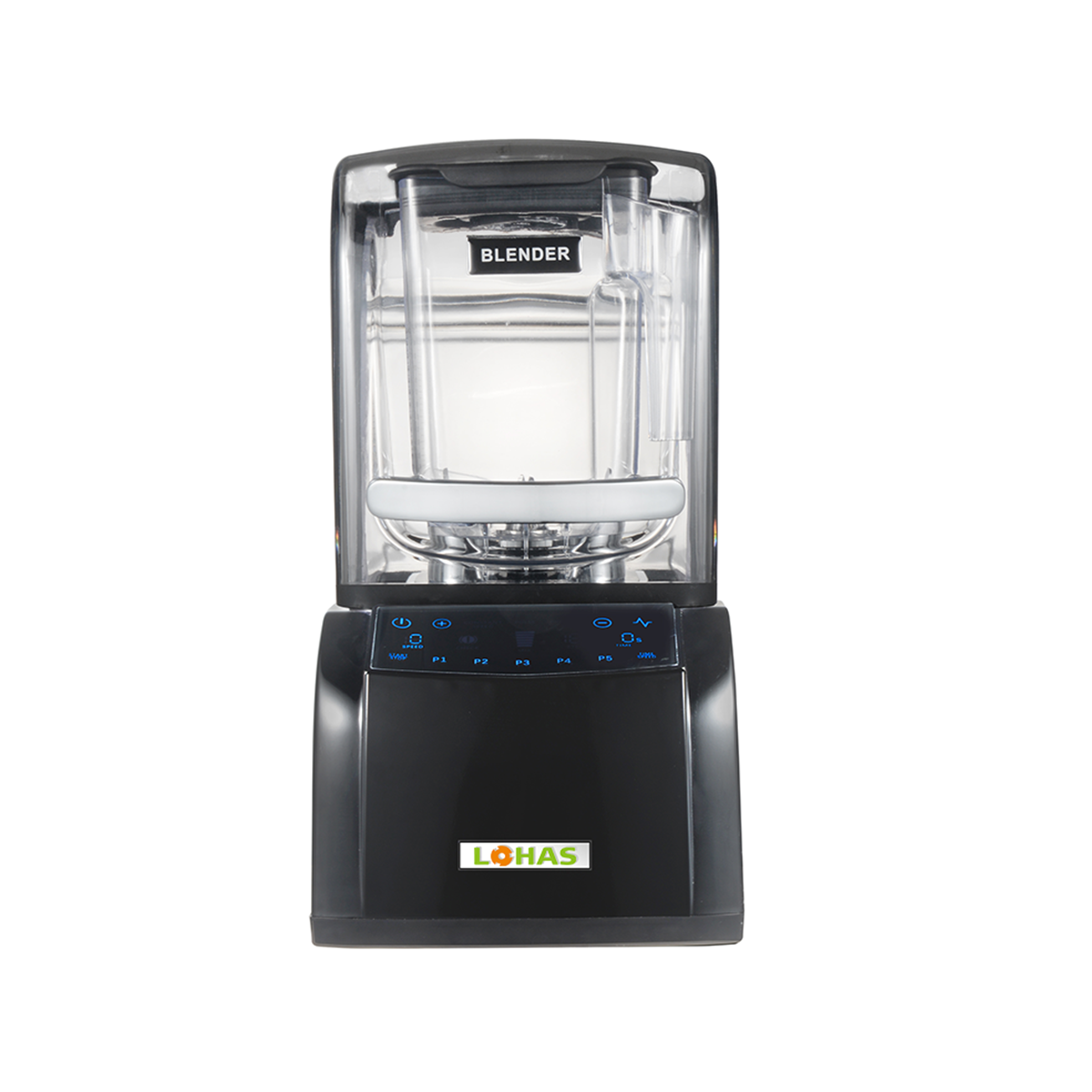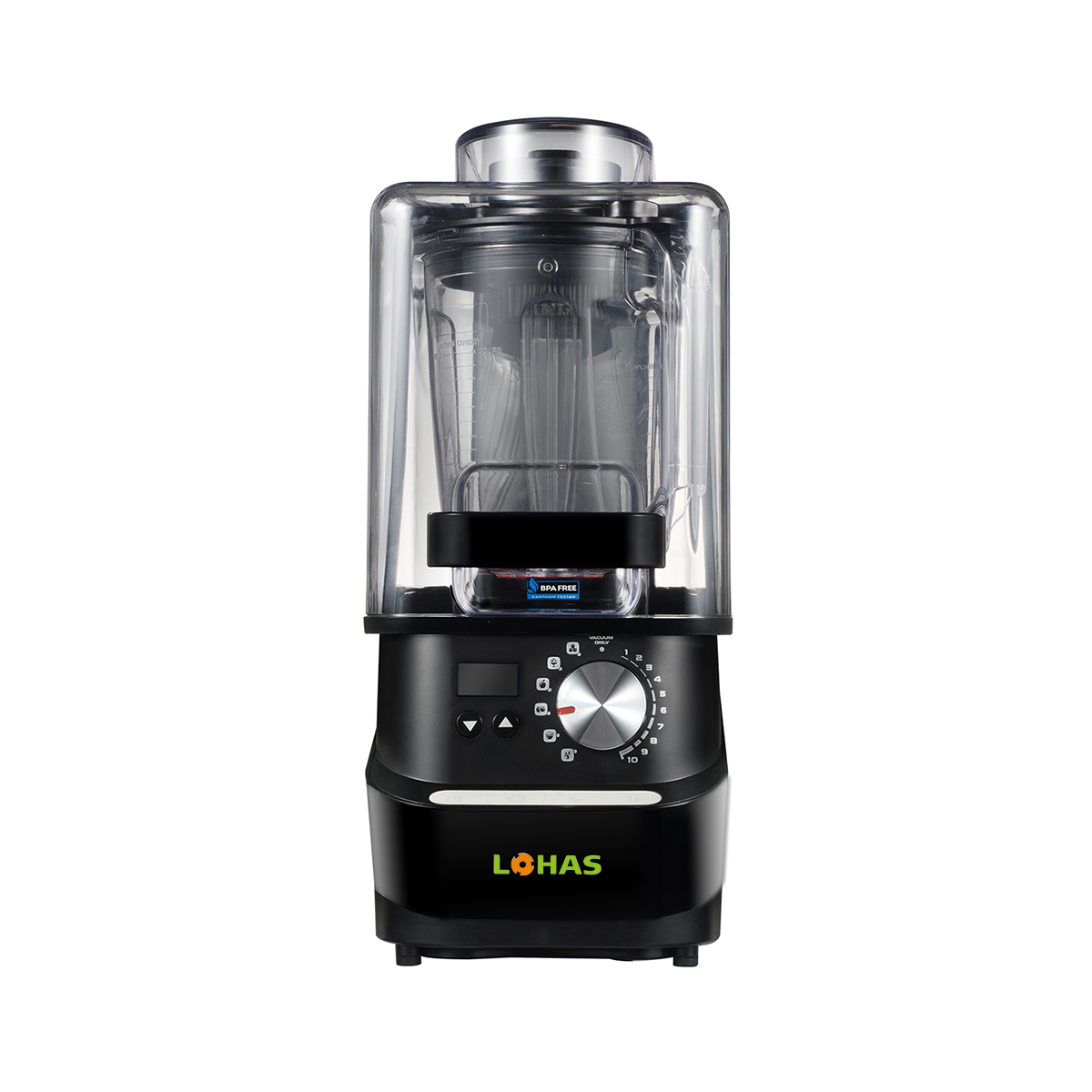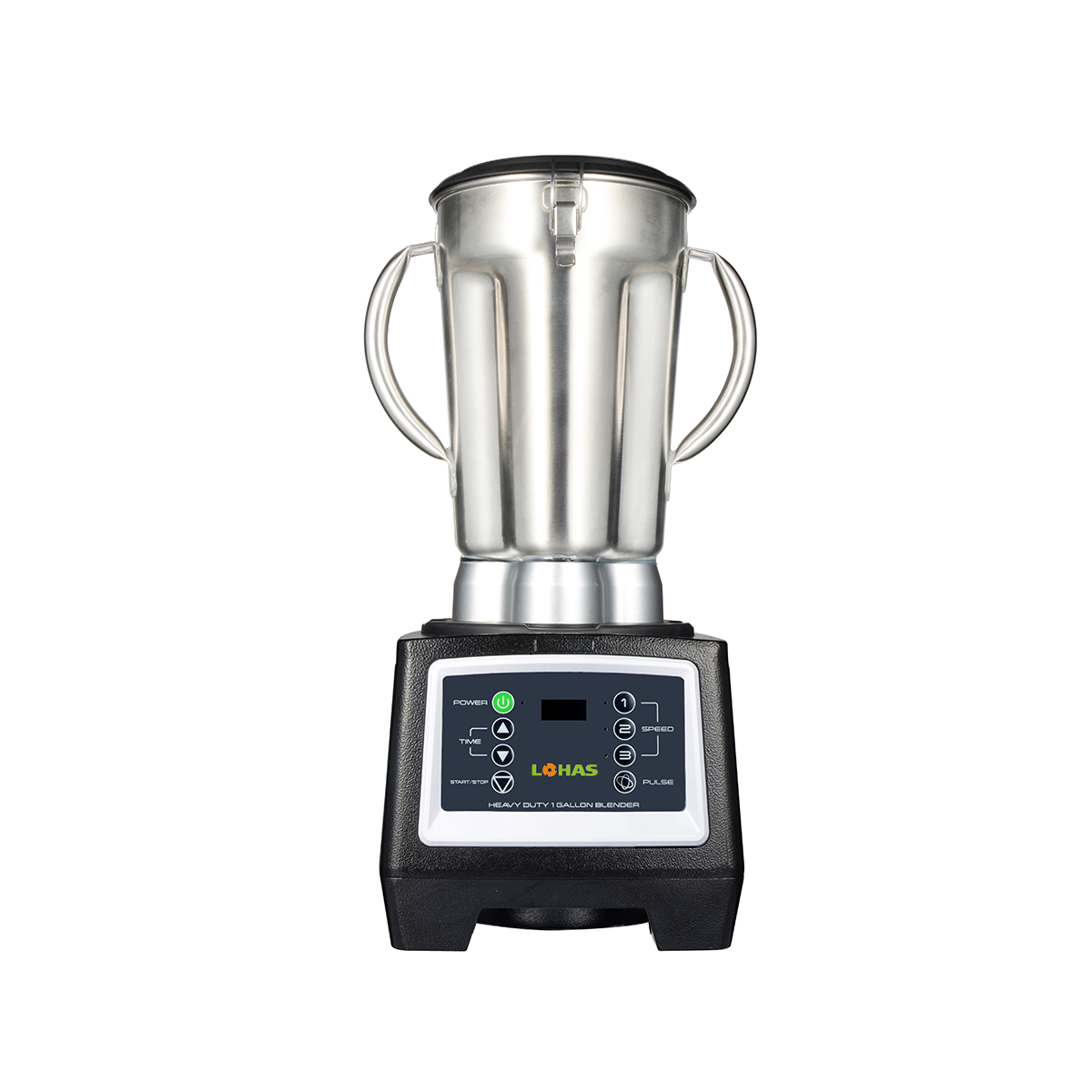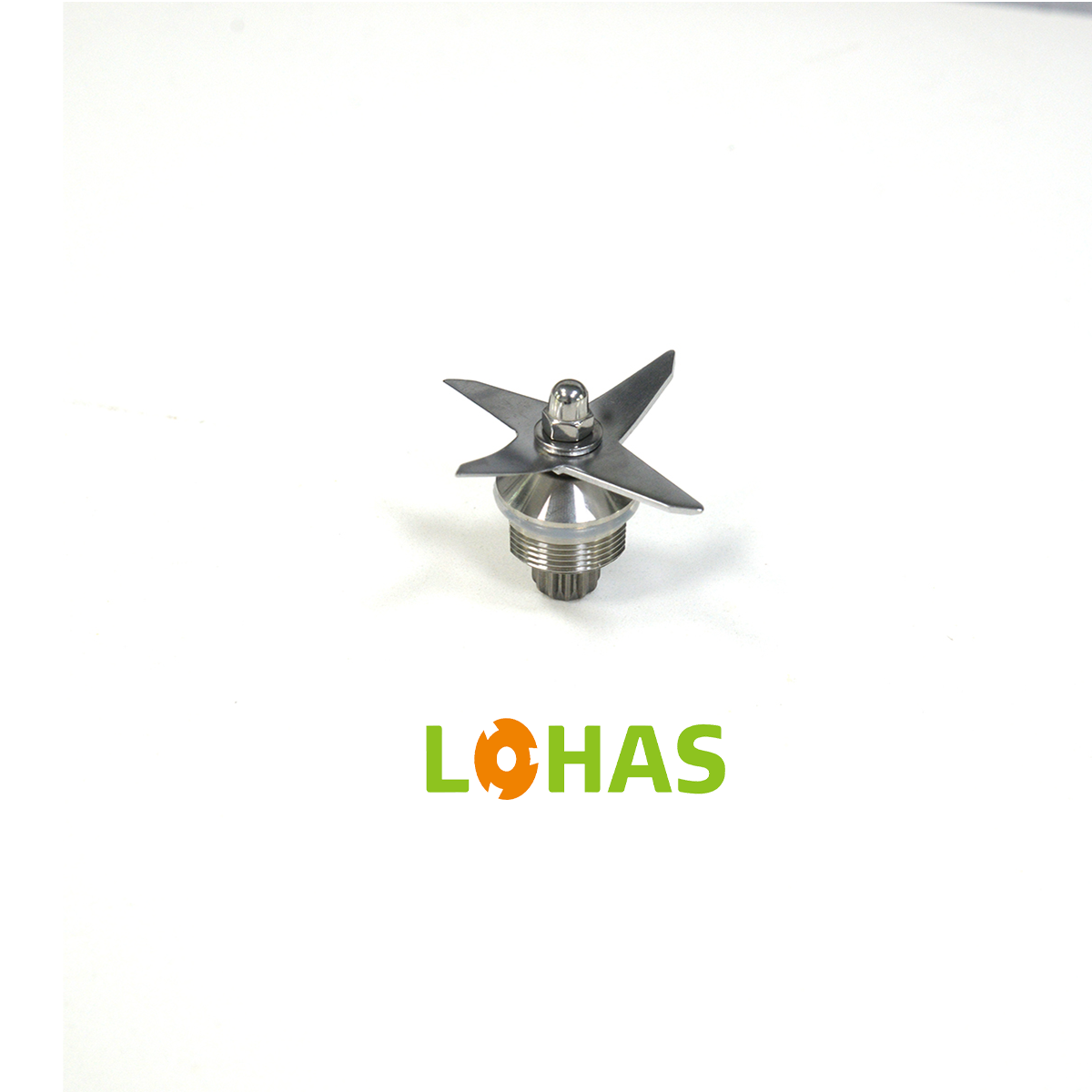Kepentingan Pengisar Kuat dalam Dapur Komersial
Dalam mana-mana dapur profesional atau perniagaan perkhidmatan makanan, keperluan akan konsistensi, kebolehpercayaan, dan kuasa adalah sangat penting. Sebuah penyedut berat berfungsi sebagai alat penting bagi tukang masak, barista, dan pengendali restoran yang bergantung pada kecekapan dan kelajuan semasa menyediakan resipi. Berbeza dengan model rumah biasa, pengisar kuat direka untuk menahan penggunaan berterusan, mengisar bahan-bahan keras seperti ais, buah beku, kacang, dan sayuran berserat tanpa cepat haus. Pengguna komersial memerlukan ketahanan, dan pengisar kuat terbaik akan memberikan prestasi yang tahan lama serta hasil pengisaran yang konsisten. Bagi restoran, kafe, dan kedai smoothie, melabur dalam pengisar kuat bukan sahaja soal kemudahan tetapi juga memastikan kepuasan pelanggan melalui tekstur dan rasa yang konsisten.
Ketahanan Model Pengisar Kuat
Bahan dan pembinaan
Kekuatan pengisar berat terletak pada kualiti pembinaannya. Model komersial kerap dilengkapi bilah keluli tahan karat, tapak motor yang diperkukuh, dan bekas yang diperbuat daripada bahan tahan lama dan tidak mudah pecah. Ketahanan ini memastikan pengisar berat mampu mengendalikan pengisaran berjumlah besar tanpa rosak di bawah tekanan. Bagi perniagaan, bahan-bahan ini bermaksud lebih sedikit penggantian, pengurangan masa hentian, dan kecekapan keseluruhan yang lebih baik di dapur.
Prestasi Jangka Panjang
Pengisar berat sepatutnya mampu bertahan selama bertahun-tahun digunakan setiap hari tanpa kehilangan kecekapan. Tidak seperti pengisar biasa, mesin gred komersial ini direkabentuk untuk menahan operasi berterusan. Pengisar berat terbaik mengekalkan prestasi walaupun selepas beribu-ribu kitaran, menjadikannya pelaburan yang boleh dipercayai. Apabila memilih pengisar berat, pemilik perniagaan mencari model yang memberikan kuasa konsisten tanpa overheat, memastikan hasil yang lancar setiap kali.
Kuasa dan Prestasi Pengisar Berat
Kekuatan Motor
Salah satu ciri utama yang membezakan pengisar berat ialah kapasiti motornya. Model komersial biasanya dilengkapi dengan motor yang kuat untuk mengendalikan bahan-bahan paling sukar dengan mudah. Pengisar berat dengan motor yang kukuh menjamin tekstur yang lebih halus dan penyediaan yang lebih cepat, yang sangat penting semasa waktu puncak perkhidmatan di restoran atau bar jus. Prestasi motor secara langsung memberi kesan kepada kecekapan pengisaran, menjadikannya keutamaan utama apabila memilih pengisar untuk kegunaan komersial.
Kecekapan dalam Operasi Harian
Kecekapan adalah penting dalam mana-mana dapur profesional. Pengisar berat memastikan kakitangan dapat menyediakan smoothie, sos, sup, dan minuman sejuk beku dengan cepat dan konsisten. Dengan mengurangkan masa pengisaran dan mengekalkan kualiti, pengisar berat menyumbang kepada aliran kerja yang lebih baik dan perkhidmatan pelanggan yang lebih pantas. Bagi perniagaan berpermintaan tinggi, kecekapan bukan sahaja berkaitan kelajuan tetapi juga pemeliharaan rasa dan tekstur yang konsisten merentasi pelbagai hidangan.
Kepelbagaian Aplikasi Penghancur Berat
Penyediaan Minuman
Penghancur berat sangat diperlukan dalam penyediaan minuman, terutamanya untuk kafe, kedai smoothie, dan bar. Dari menghancurkan ais hingga mencampur buah beku menjadi minuman berkrim, mesin ini mampu mengendalikan semuanya. Penghancur berat berkualiti tinggi memastikan setiap minuman dihasilkan dengan tekstur yang licin dan menyegarkan, memberikan pengalaman konsisten yang diharapkan pelanggan. Perniagaan yang berfokuskan kepada minuman sering bergantung kepada beberapa penghancur yang beroperasi serentak, itulah sebabnya ketahanan penghancur berat begitu penting.
Penyediaan Makanan
Selain minuman, penghancur berat juga sama pentingnya untuk penyediaan makanan. Jurumasa menggunakannya untuk membuat sup, sos, puree, celupan, dan malah doh. Penghancur berat boleh menggantikan beberapa alat dapur dengan menjalankan pelbagai tugas secara berkesan. Kebolehpelbagaian penghancur berat menjadikannya alat yang mesti ada di mana-mana dapur profesional yang ingin menjimatkan masa sambil meningkatkan kualiti.
Kapasiti dan Reka Bentuk Model Penghancur Berat
Pilihan Bekas Besar
Dapur komersial kerap perlu menyediakan kuantiti besar sekaligus. Pengisar berat biasanya menawarkan pilihan bekas yang lebih besar untuk membolehkan pengisaran dalam kuantiti banyak, mengurangkan keperluan untuk beberapa kitaran pengisaran. Bekas berkapasiti besar ini bukan sahaja mudah digunakan tetapi juga menjimatkan masa di persekitaran yang sibuk. Pengisar berat yang sesuai memberikan fleksibiliti untuk mengendalikan hidangan kecil dan besar dengan mudah.
Reka bentuk Ergonomik dan Mesra Pengguna
Sebuah pengisar berat tidak sahaja harus kuat, malah juga mesra pengguna. Ciri-ciri seperti kawalan yang mudah dibaca, teknologi pengurangan bunyi, dan pemegang ergonomik meningkatkan kegunaan. Dalam persekitaran profesional, kakitangan mendapat manfaat daripada reka bentuk intuitif yang meminimumkan masa latihan dan mengurangkan ralat operasi. Pengisar berat yang direka dengan baik turut membantu mengurangkan keletihan pekerja yang menggunakan mesin tersebut secara kerap sepanjang hari.
Penyelenggaraan dan Penjagaan Pengisar Berat
Pembersihan dan Penyelenggaraan
Kemudahan pembersihan adalah faktor penting apabila memilih pengisar berat. Dapur komersial memerlukan masa pusingan pantas, dan peralatan yang boleh dibersihkan secara efisien menjimatkan masa dan tenaga kerja. Ramai bekas pengisar berat direka untuk selamat digunakan dalam mesin pencuci pinggan atau dilengkapi fungsi pembersihan sendiri, yang memudahkan penyelenggaraan. Pembersihan yang betul memastikan pengisar berat terus memberikan keputusan yang selamat dan konsisten.
Pemeriksaan Rutin dan Jangka Hayat
Penyelenggaraan berkala memanjangkan jangka hayat mana-mana pengisar berat. Pemilik perniagaan harus mengutamakan model yang memerlukan servis minimum sambil menawarkan jangka hayat maksimum. Memeriksa bilah, penutup dan motor secara berkala dapat mencegah kerosakan dan memastikan operasi yang tidak terganggu. Pengisar berat yang boleh dipercayai tidak sahaja meningkatkan kecekapan, tetapi juga mengurangkan kos keseluruhan pemilikan dengan mengelakkan penggantian kerap.
Soalan Lazim
Apa yang membezakan pengisar berat daripada pengisar biasa
Penghancur berat biasanya dibina dengan motor yang lebih kuat, bilah yang lebih tahan lama, dan bekas berstruktur kuat yang direka untuk menangani penggunaan berterusan dan bahan-bahan sukar. Berbeza dengan penghancur biasa, ia direka secara khusus untuk persekitaran komersial di mana prestasi tinggi diperlukan setiap hari.
Berapa lamakah penghancur berat boleh bertahan dalam persekitaran komersial
Dengan penyelenggaraan yang betul dan pembersihan berkala, penghancur berat boleh bertahan selama beberapa tahun walaupun digunakan setiap hari. Pembinaannya yang tahan lama memastikan kebolehpercayaan jangka panjang, menjadikannya pelaburan yang berbaloi untuk sebarang dapur profesional.
Bolehkah penghancur berat digunakan untuk makanan dan minuman
Ya, penghancur berat sangat pelbagai kegunaannya. Ia mampu mengendalikan jus buah, minuman beku, sos, sup, celupan, dan malah doh. Kebolehsuaianannya menjadikannya penyelesaian serba satu untuk banyak perniagaan perkhidmatan makanan komersial.
Adakah pelaburan dalam penghancur berat berbaloi untuk perniagaan kecil
Bahkan untuk operasi yang lebih kecil, penghancur berat boleh menjadi berpatutan dari segi kos disebabkan oleh ketahanan dan kecekapannya. Ia meminimumkan jangka masa pemberhentian, mempercepatkan penyediaan, dan memastikan kualiti produk yang sekata, yang pada akhirnya meningkatkan kepuasan pelanggan dan mengurangkan kos jangka panjang.







